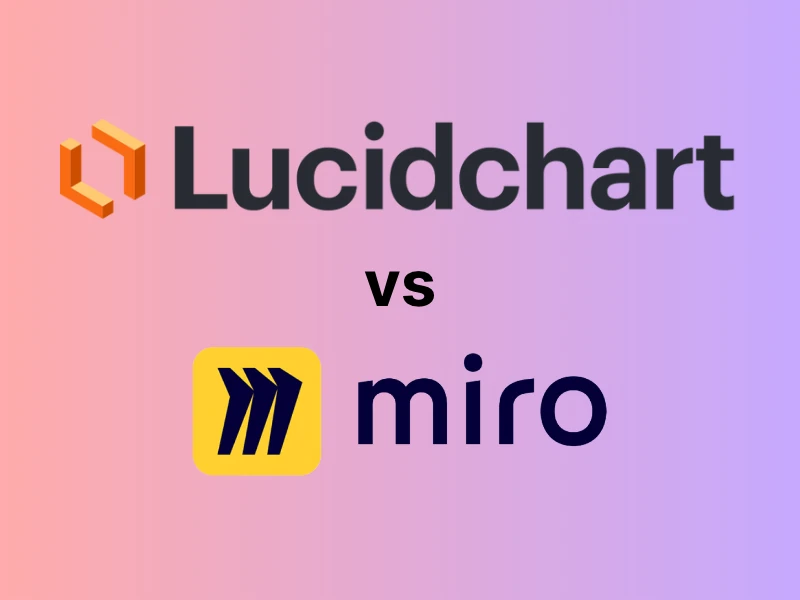RevOps is an important aspect of business operations that integrates sales, marketing, and customer success to drive growth and revenue. To achieve success in RevOps, businesses need to have a clear understanding of their processes, workflows, and strategies. One of the most effective ways to achieve this is through process mapping. Two popular tools for process mapping are Lucidchart and Miro. In this blog post, we will compare Lucidchart and Miro for RevOps process mapping.
Overview of Lucidchart
Lucidchart is a cloud-based diagramming software that allows users to create and share flowcharts, diagrams, and other visual representations of processes. It is a popular tool for process mapping due to its user-friendly interface and extensive library of pre-built templates and shapes.
Lucidchart offers a range of features for process mapping, including:
- Drag-and-drop interface for creating and editing diagrams
- Collaboration features, such as real-time co-editing and commenting
- Integration with popular business tools, such as Google Drive and Salesforce
- Ability to import and export diagrams in a variety of formats, including PDF, PNG, and Visio
Overview of Miro
Miro is a collaborative online whiteboard that allows teams to ideate, collaborate, and organize their work visually. It is a popular tool for process mapping due to its flexible and intuitive interface, extensive library of templates, and collaboration features.
Miro offers a range of features for process mapping, including:
- A flexible canvas for creating and organizing diagrams, with the ability to add sticky notes, comments, and other annotations
- Collaboration features, such as real-time co-editing, voting, and commenting
- Integration with popular business tools, such as Slack, Jira, and Trello
- Ability to import and export diagrams in a variety of formats, including PDF, PNG, and CSV
Comparison of Lucidchart and Miro for RevOps process mapping
Both Lucidchart and Miro offer a range of features for process mapping, but they differ in their approach and focus. Here are some of the key differences between the two tools.
Interface and Ease of Use
Lucidchart has a more traditional interface, with a toolbar and sidebar for adding shapes, lines, and text to diagrams. It is easy to use and navigate, and the pre-built templates and shapes make it simple to get started.
Miro, on the other hand, has a more flexible interface that allows users to create diagrams in a more free-form way. This can be both a strength and a weakness, depending on the user's needs and preferences. While Miro's interface may take some time to learn, it offers a lot of flexibility for customizing diagrams and collaborating with team members.
Collaboration Features
Both Lucidchart and Miro offer real-time co-editing and commenting, which are essential for team collaboration. However, Miro offers additional collaboration features, such as voting and timer tools, which can be useful for facilitating group decision-making.
Integration with Business Tools
Both Lucidchart and Miro offer integration with a range of popular business tools, such as Google Drive and Slack. However, Lucidchart has a stronger integration with Salesforce, which may be important for businesses that use Salesforce for their sales and marketing processes.
Templates and Customization Options
Both Lucidchart and Miro offer a range of pre-built templates and shapes for creating diagrams. However, Miro's templates tend to be more creative and visually engaging, while Lucidchart's templates tend to be more straightforward and functional. Additionally, Miro offers more customization options for diagrams, such as the ability to add custom backgrounds and stickers.
Pricing
In terms of pricing, both tools offer a range of plans to choose from, depending on the needs of the user or team. Here's a breakdown of their pricing:
Lucidchart Pricing:
- Basic: Free (limited features)
- Individual: $7.95/month (billed annually) or $9.95/month (billed monthly)
- Team: $20/user/month (billed annually) or $25/user/month (billed monthly)
- Enterprise: Custom pricing (contact sales)
Miro Pricing:
- Free: Limited functionality
- Team: $8/user/month (billed annually) or $10/user/month (billed monthly)
- Business: $16/user/month (billed annually) or $20/user/month (billed monthly)
- Enterprise: Custom pricing (contact sales)
As you can see, both tools have a free version, but the paid plans differ in price and features. In general, Lucidchart tends to be more expensive than Miro, especially for larger teams, with its Team plan costing $20/user/month compared to Miro's Team plan at $8/user/month. However, Lucidchart's Individual plan is cheaper than Miro's Team plan.
Which tool is better for RevOps process mapping?
The answer to this question depends on the user's needs and preferences. Lucidchart is a great tool for creating straightforward diagrams with minimal fuss, while Miro is well-suited for creativity and collaboration. Ultimately, it is up to the user to decide which of these two tools best meets their individual needs.
Regardless of which tool you choose, both Lucidchart and Miro are great options for creating and collaborating on RevOps process maps. Both offer a range of features and customization options, so there is sure to be something that meets your needs. With either tool, you can create visually engaging diagrams that will help streamline your operations and maximize efficiency.

Comments